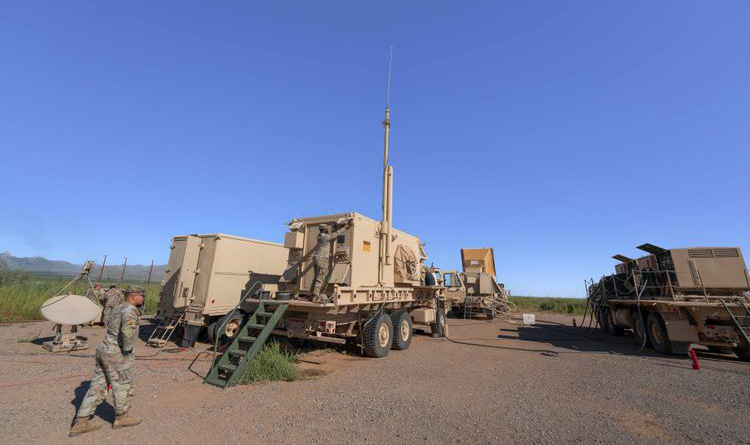INDIAN ARMED FORCES CHIEFS ON
OUR RELENTLESS AND FOCUSED PUBLISHING EFFORTS

SP Guide Publications puts forth a well compiled articulation of issues, pursuits and accomplishments of the Indian Army, over the years

I am confident that SP Guide Publications would continue to inform, inspire and influence.

My compliments to SP Guide Publications for informative and credible reportage on contemporary aerospace issues over the past six decades.
- Prime Minister witnesses 'Bharat Shakti' – a Tri-Services Firing and Manoeuvre Exercise in Pokhran, Rajasthan
- Interim Defence Budget 2024-25 — An Analysis
- Union Defence budget 2024
- Indian Army: In quest of greater firepower and policy recommendations for gaps
- Indian Army Annual Press Conference 2024
- 6G will transform military-industrial applications
Northrop Grumman's IBCS Approved For Full Rate Production, Readying Transformational System For Fielding Around the Globe

The United States Defense Department has approved Full Rate Production for Northrop Grumman Corporation’s Integrated Battle Command System (IBCS). The decision scales the US Army’s ability to field the paradigm-changing system, enabling sensor to decider to weapon integration. It also affirms IBCS’s role as the cornerstone of the US Army’s air and missile defense modernization strategy.
IBCS rapidly integrates all available sensors and shooters to deliver decision-quality fire control data across joint networks providing a 360-degree view, even if a sensor becomes inoperable. This capability provides increased situational awareness, more effectively manages resources, and enables integration across coalition partners.
“IBCS transforms the battlespace by fusing data from any sensor to create a single integrated air picture allowing commanders to see the battlespace and use the best weapons to defeat complex threats,” said Rebecca Torzone, vice president and general manager, combat systems and mission readiness, Northrop Grumman. “Northrop Grumman shares the US Army’s commitment to the rapid deployment of IBCS.”
The full rate production decision enables the US Army to set the fielding schedule for IBCS to operational air defense units. The system provides state-of-the-art, all domain command and control for integrated air and missile defense for US interests across the globe. Poland selected IBCS to serve as the centerpiece of the country’s air and missile defense modernization, and as it is adopted by more US allies and partners, IBCS will enable high levels of coalition forces interoperability and network integration.
This decision is the latest in a series of milestones for the program. In a paradigm-busting developmental test in November 2022, IBCS successfully intercepted a cruise missile target using a Patriot interceptor without having a Patriot radar in the system architecture. The test demonstrated the flexibility of the IBCS system architecture and its capacity to optimize the capabilities of integrated sensors and effectors onto its network. Additionally, the Agile framework used for IBCS software development yields rapid capability enhancements and addresses emerging threats.
In December 2021, Northrop Grumman was awarded a $1.4 billion production contract for Low Rate Initial Production and Full Rate Production, and in late 2022, the program completed Initial Operational Test and Evaluation. Initial operational capability for IBCS is on track for a declaration in 2023.
IBCS implements a modular, open and scalable architecture that is foundational to integrating available assets in the battlespace, regardless of source, service or domain onto a common fire control network. Its architecture enables the efficient and affordable integration of current and future systems and extends the battlespace by disaggregating sensors and effectors. By enabling this high level of network integration, the warfighter is given unprecedented time to make decisions within the kill chain. Through numerous successful development and operational tests and demonstrations, IBCS has proven its capability to connect and fuse multi-service sensor data to multi-service weapons, demonstrating Joint All Domain Command and Control (JADC2) capabilities.





